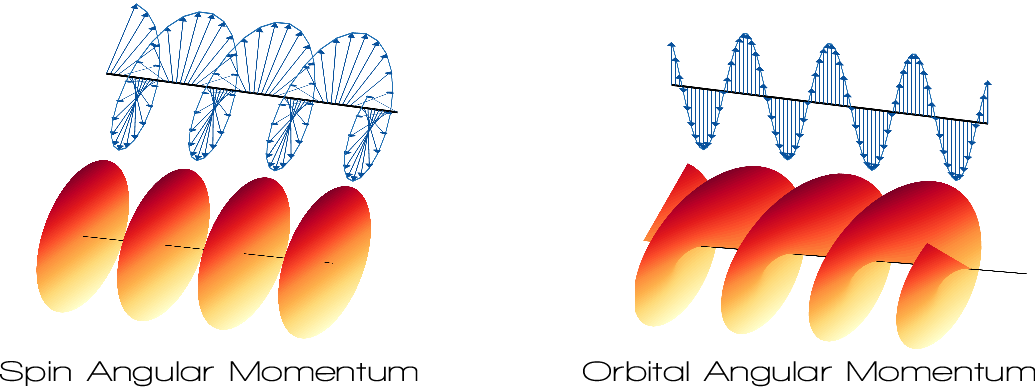Études XUV des faisceaux lumineux porteurs de moments angulaires : Synthèse et échanges
Les photons peuvent avoir des quanta de moment angulaire orbital et de spin (OAM et SAM) [Lavery 2012].
Dès les premières discussions [Poynting 1909], le SAM a été clairement associé à la polarisation de la lumière et a conduit à de nombreuses méthodes de diagnostic pour la matière chirale ou la matière sous champ magnétique.
Pour l’OAM, la littérature théorique n’a donné qu’une description formelle, assez éloignée de la portée expérimentale.


Ce n’est que récemment que le lien a été explicitement établi entre l’OAM et les propriétés du champ lumineux [allen 1992]. Elle correspond, dans les exemples des manuels, à un front d’onde spiralé, la polarisation restant linéaire.
Les deux types de moment angulaire présentent des similitudes et des différences lorsqu’ils interagissent avec la matière, ce qui justifie leur étude conjointe.
Jusqu’à présent, la polarisation a surtout été étudiée dans le domaine visible pour son application potentielle aux pinces optiques, à l’enchevêtrement quantique, à l’amélioration du multiplexage des données ou à la surveillance des surfaces.
Il a également suscité un grand nombre de questions fondamentales sur son lien et son interaction avec la SAM régulière.
En outre, lorsqu’il interagit avec la matière, il peut induire des processus non linéaires inhabituels.
Ces spécificités sont liées aux lois de conservation de la quantité de mouvement.
Cependant, les tests fondamentaux n’ont pu être réalisés que partiellement, soit parce que la lumière visible dans l’IR induit des transitions dans des régions du spectre généralement très encombrées, soit parce que les processus non linéaires rapportés restent confinés au 3e ordre.
Dans Xstase, nous avons développé des sources XUV d’une durée allant de la femtoseconde à l’attoseconde afin d’étudier l’interaction ultra-courte de la matière avec l’un ou l’autre type de moment angulaire.
Porteur du projet : Thierry RUCHON


